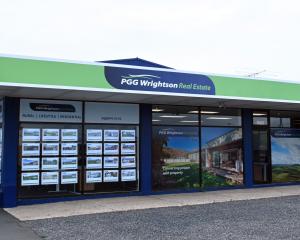The economy, and particularly the Canterbury region, is being supported by rebuilding after the earthquakes, ANZ chief economist Cameron Bagrie says. But he disagrees the economy is set to fall into a hole as the $40 billion rebuild stimulus fades.
The stimulus peak from the rebuild was just below 2% of GDP but that had been steadily building over four years and the stimulus would fade gradually from its forecast peak in 2017.
''We suspect the rebuild will take longer. But, irrespective, people know it will peak in the coming years and this gives them time to adjust and plan accordingly.''
The rebuild stimulus was being offset by contractional fiscal policies that would not remain that way indefinitely. Politicians would not keep their hands off the loot, he said.
The implications of scaling up irrigation-related development across the Canterbury Plains was not broadly acknowledged. It was huge, and included projects from North Canterbury to North Otago.
A host of the Canterbury rebuild-related work was necessary for replacement demand impetus to occur, with tourism, education and central business district activity being examples.
Tourism numbers to Christchurch had lifted but remained low nonetheless.
The number of guest nights in Christchurch was 73% of the level before the earthquakes and the average international tourist spend was 65% of the pre-earthquake level.
''Of course, a quake-ravaged city is not exactly a tourism mecca but there was also a lack of capacity with the large hotels out of action.This is evidenced by the lift in guest nights in the rest of Canterbury during the period.''
As more hotels opened and the city recovered, guest nights would continue to rise, he said.
Enrolments at the University of Canterbury, at about 13,000 students in 2011, were about 30% lower than in 2010.
The critical point to note was those sectors were infrastructure dependent. Get the infrastructure in place, increase the amenities available, build the housing and the people would come, Mr Bagrie said.
The rebuild was placing pressure on aggregate demand. The unemployment rate in Canterbury was 2.8%. Some fading in momentum was to be expected given supply-side constraints. Fading momentum was not a downturn.
''Christchurch is chewing up resources that could otherwise be devoted to other activities. It's natural for resources to be drawn to a major event. These resources can be redeployed.''
There was no shortage of construction demand across the economy. The building effort going on in Christchurch was going head-to-head with growing demand for construction around the country more generally, he said.
Auckland had immense housing demands to satisfy and the Government had earmarked significant funds for capital investment in the wider economy.
Though the waning of the rebuild effort did not spell doom and gloom for the wider New Zealand economy, there would be regional specific aspects to manage.
The onus was on local policy makers and businesses to get alternate drivers of growth in place in a timely fashion and think more broadly beyond the rebuild itself, Mr Bagrie said.
There would be friction internally as the key drivers of growth in Christchurch moved away from construction towards broader sections, including tourism. Resources would need to adjust and there would be tension as the process panned out.
For Canterbury to flourish after the rebuild, key microeconomic facets and sectors needed to be firing.
They included: the education sector, two universities or potentially an amalgamated one; manufacturing, a hub of non-commodity manufacturing excellence; agriculture, Canterbury Plains-related development; emerging IT businesses; tourism, Christchurch Airport v Queenstown and Auckland airports competing for tourism visitors; and the port, with major competition likely from Timaru.
Mr Bagrie said there had been some encouraging developments.
New direct air routes between Christchurch and Taiwan were an example of a small microeconomic facet adding progressive impetus to growth and backbone beyond the rebuild.












